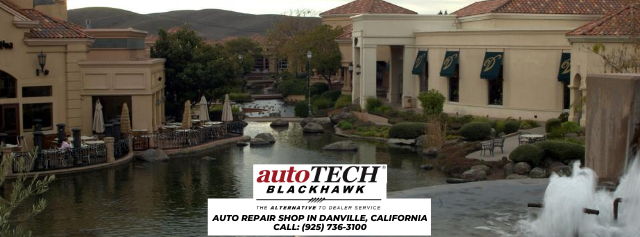What Happens If I Ignore My Low Tire Pressure Warning Light?
If you drive a car built in or after 2008, your vehicle uses a tire pressure monitoring system (TPMS) that tracks tire pressure through a series of sensors. What many people don’t realize, however, is that the low-pressure warning light won’t come on until the tire reaches 25 percent below the manufacturer’s recommended safe driving pressure. In essence, the TPMS warning light should not be a substitute for regular tire pressure checks because properly inflated tires are crucial for safe driving.
What to Do if the Light Comes On
If you notice that your tire pressure light has been switched on, you should check the air pressure as soon as possible. Make sure you check all four tires, not just one. Add air to any tire that indicates a pressure below the recommended level. You can find the specific recommended levels for your vehicle on a sticker that is usually located inside the driver’s side door. Be careful not to over-inflate your tires, and only add air until the correct level is reached. It’s important to note that this light can also come on if your pressure is too high.
Why You Should Never Ignore the TPMS Warning Light
The under-inflated tire – even minimally – can fail and endanger your safety. For example, underinflation causes the tires to flex more and generate more heat. Under these conditions, other components inside the tire can overheat and disintegrate. Now imagine this scenario on a balmy summer day as you drive 70 mph down the freeway. The risk is just not worth it.
In addition , low tire pressure puts your vehicle under stress, resulting in a loss of fuel efficiency. Not to mention, tires that do not operate at the optimum level will wear out sooner. Since under-inflated tires are easy to fix, why risk them?
Is it Safe to Drive?
If your tire pressure is only slightly low, you should be able to drive safely for a few miles until you can add air. Extremely low tire pressure can lead to tire failure. This could lead to a blowout, which could be extremely dangerous. You’ll also experience poor traction, and your car won’t be able to absorb the impact of the road properly. This is extremely dangerous in bad weather conditions like rain or snow, as your tires won’t be able to get a firm grip on the road when you drive and turn corners.
The tire pressure light is specifically designed to alert you that there is an air pressure issue, so it should not be ignored. If you don’t check the air, you might be in danger of getting a flat tire. If you experience a blow-out, it can have serious consequences that could affect your safety, the safety of your passengers and the safety of other drivers on the road. Stop at a gas station as soon as you can and refill the tires until they reach their proper levels of air. It’s the best defense against overwear and a possible accident.
Steps to Take When the Warning Light Comes On
If the TPMS warning light is switched on, find a safe place to pull over and check the pressure on all tires. Although only one may need air, it never hurts to create a habit of in-depth checks. Did you know that cold weather is affecting tire pressure? When temperatures fall, your TPMS warning light could be triggered, especially after a freezing winter night. When this happens, the light is supposed to shut down after a few minutes.
If the light flashes but doesn’t stay on, it could be a malfunction with your TPMS system. Driving on a spare can also cause a flashing light if the system can not effectively detect the original wheel. If you think the monitoring system is on the fritz, having it checked by a licensed mechanic should be a priority.
Are You Looking for an Independent Auto Repair Shop you Can Trust?
If you’re considering making a change to an independent auto repair mechanic trusted by thousands of happy customers, look no further than autoTECH Blackhawk. Why? We differ from other automotive repair stops because we are a relationship shop. This means that the more of your car repair needs we support you with, the better able we are to customize our recommendations based on your driving habits and needs. Whether you want to keep the daily driver in ‘good enough’ condition, style your new car so that it’s customized just for you, maintain your favorite car in ‘like new’ condition, or even train your whole family to be more knowledgeable about cars – we partner with you to ensure that your cars meet your needs. We also offer an industry-leading 3-Year/36,000 mile warranty, so we only use Original Equipment and manufacturer recommended products. Contact us now to book your no-contact, friendly appointment! We truly value your trust and your business, so thank you for staying local with your auto repair needs.

By Jon ‘ShakataGaNai’ Davis, CC BY 3.0, https://commons.wikimedia.org/w/index.php?curid=3177569
We have come up with some other amazing articles answering these questions! Check them out here:
What Are The Most Common Auto Repairs?
What Should I Do When My Check Engine Lights Come On?
How Often Should I Have My Brakes Checked?
How Often Should I Have My Brake Pads Replaced?
How Do I Know What Type of Oil Filter Do I Need?
How Do I Know What Type of Oil My Car Needs?
What Is Routine Maintenance On A Vehicle?
